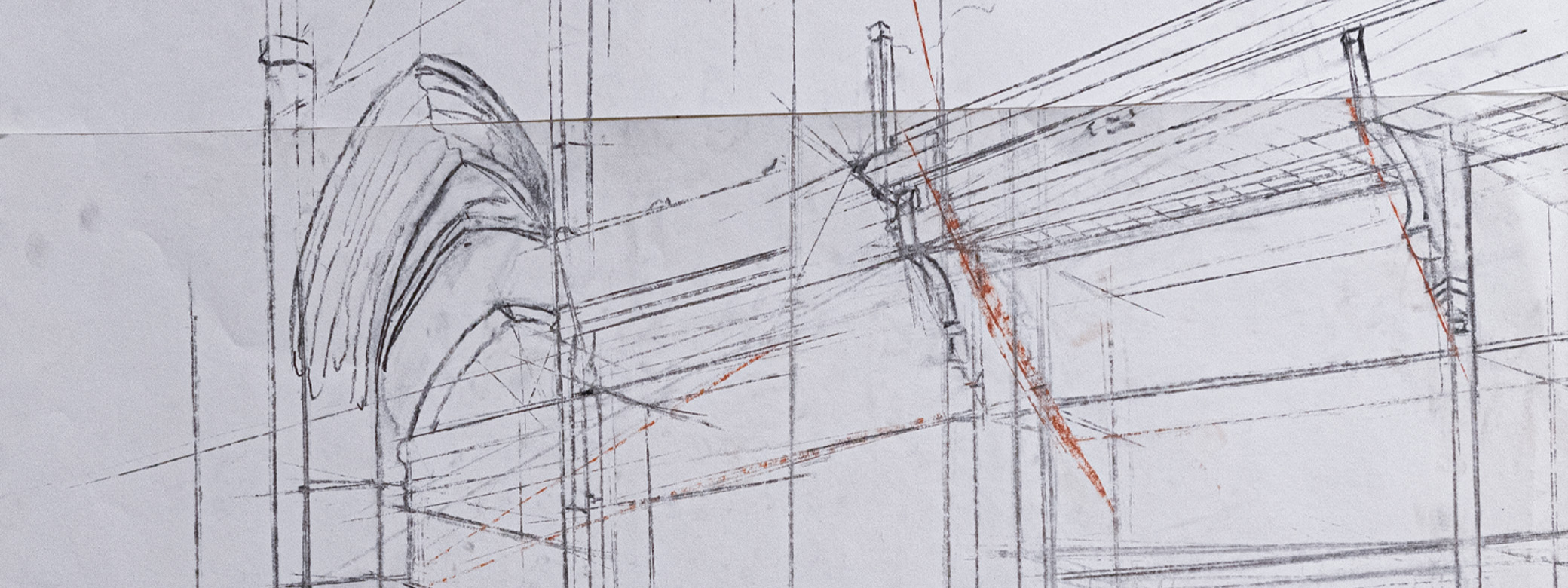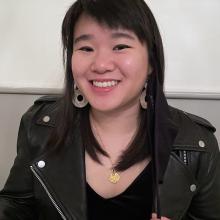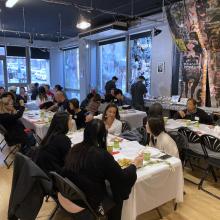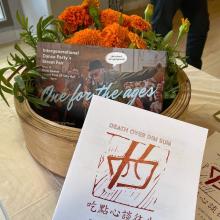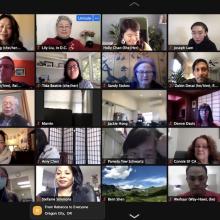Background
Holly Chan received her Bachelor of Design degree in 2017, majoring in interaction design. After graduation, she spent more than two years working for Ancestry in the San Francisco Bay area. Chan became a user experience designer at Blue Origin in May 2020.
Interview
Did you enter the UW with the intention of studying design?
From the start, I did intend to study design, but I had expected that I would be focusing on industrial design. My vision at the time was to acquire the skills I needed to design and build eco-friendly caskets, urns, and other means of burial.
What made you choose interaction design specifically?
For me, the pivotal class was the Principles of Interaction Design sophomore course jointly-taught by Kat Holmes and August de los Reyes. Both were design directors at Microsoft at the time. Together, they taught us design through the lens of accessibility, and I was intrigued by the subtle ways design has both worked for and against users throughout history. I liked the idea of good design being invisible, and that even a minuscule improvement could ripple out a profoundly better experience for a broad spectrum of people. I saw studying this subject as a way for my design to improve the lives of disenfranchised minorities — an idealistic childhood aspiration made real.
Do you have any significant memories from your time as a student here?
I have some fuzzy memories of all-nighters spent in the Art Building. My personal tradition was to brace myself for critique the next morning with the winning combo of a thick slice of banana bread and a latte from Parnassus.
But on a more serious note –
On the last day of class in spring 2015, August de Los Reyes read us "The Laughing Heart" by Charles Bukowski. After class, I copied the poem onto a piece of yellow notebook paper and taped it to my dorm wall, where it lived for the next three years of undergrad. The poem became something of a mental health anthem for me and still is. All the way to his passing this past year, I had stopped short of articulating to August what exactly that moment of sharing in class truly meant to me. I hope he somehow did manage to discern it at some point from the multiple occasions of awkward chatter we shared while we both lived in San Francisco.
Outside of the design program, my favorite memory from my time as a student is the night my study abroad cohort spent sleeping under the stars in the lavender fields of the Rab Psychiatric Hospital in Croatia. We all lay out there to watch the meteor shower that peaked that night. Waking up covered in mosquito bites and dew was worth falling asleep to the scent of lavender in the warm wind and the sight of every meteor we could catch burning close to the horizon of a Milky Way-emblazoned sky.
Are there things you learned as a design student that still inform your work today?
The UW design program was particularly successful in training us in how to present our work and give as well as accept critique. The thick skin we developed from the experience of regular group critique in the program turned out to be a precious skill in the workplace. Don’t be surprised if you get asked to teach others these skills, even by other more senior designers in the industry.
Did your 2016 internship at Ancestry help you get your job there after graduation?
Since I still had a year of school left, I didn’t actually conclude my internship with a full-time offer from Ancestry. It still helped tremendously that I had friends and professional connections in the company the following summer, and it without a doubt expedited my interview and hiring process.
What type of work did you do at Ancestry, and what did you particularly like about working there?
I worked on nearly every product and platform while at Ancestry, ranging from genealogy SEO on the web to the more experimental storytelling features on the DNA and health apps. I also helped found Ancestry’s LGBTQ+ employee resource group, Ancestry Queer in Technology (AQT).
The best part of working at Ancestry was how deeply entrenched the product team was with their customers. One quickly learns how emotionally-attached our customers are with the product. It was something of a privilege to witness how closely we as designers were able to work and connect with our customers throughout the design process. I especially enjoyed conducting generative field research alongside our user researchers. Even outside of official research — in places as random as the grocery store line — there was something truly moving about someone seeing that you worked for Ancestry and, regardless of whether they were a customer or not, them feeling like they could open up to you about their family stories and discoveries.
What brought about your job transition from Ancestry to Blue Origin?
By the time I started talking with Blue Origin, I had actually been feeling rather restless at Ancestry. After two years, I knew I wasn’t growing in the ways I had hoped as a user experience designer, but at the same time I felt emotionally-attached to my projects and teammates. I felt myself stagnating as my work at Ancestry was more of that of a product designer rather than a user experience designer or design strategist. Eventually, after experiencing the compounded emotional toll of two of my projects being scrapped, a former design teammate from Ancestry reached out to me, eager to introduce me to the team he was building at Blue Origin. During an informal meet and greet at the Kent site, the burgeoning team and I ended up hitting it off. Taking this as a flashing neon sign that it was time to change, I then commenced the official application and interviewing process over the next few months before the pandemic hit.
Tell us about the work you’re currently doing at Blue Origin.
My work primarily revolves around designing the internal enterprise software used by engineers on the manufacturing floor across our worksites. I also co-lead Blue Origin’s LGBTQ+ business resource group, New Ride (named for astronaut Sally Ride!)
Looking at your capstone work from 2017 and your volunteer work, it’s clear you have an interest in healthy conversations about death. What sparked that interest, and are you continuing to work with that topic?
This interest began during my senior year of high school, while procrastinating during an AP Computer Science class. Somehow, on a local news channel site, I saw a link to an article covering a local artist — Greg Lundgren — who was making an international name for himself creating colorful glass headstones. Learning of Lundgren and other minds in the world of "deathcare" was the tug on the thread that unraveled what would become an obsession with designing for death. With Lundgren’s encouragement, I entered an international design contest with my take on an "unorthodox vessel for human remains." I ended up making it to the shortlist of all the entries, which was the ego boost teenaged me needed to propel myself into seriously considering making a career out of design. Throughout my design education, this passion never abated. If anything, it was the surefire way to motivate myself to make it through the most difficult all-nighters or bounce back from failed assignments.
I continue to work within the end of life space to this day. I’ve reframed my work to focus on improving the education and care experiences leading up to death, especially for the unique needs of the Asian American Pacific Islander (AAPI) community. While living in San Francisco, I frequently volunteered with the End Well Symposium and Reimagine End of Life nonprofits. It was there that I connected with registered nurse and end of life doula Elizabeth Wong. Together we have founded events such as Death over Dim Sum, as well as an ongoing AAPI Table Talk series whose goal is to hold space for the AAPI community to discuss living and dying well.
Do you have any advice for current or prospective students about the value of an arts degree in general and/or a design degree specifically?
Had I not been accepted into the design program, there were multiple majors I could have taken on in order to qualify for a role as a user experience designer. However, I don’t regret choosing interaction design as my major because the design program’s foundations have taught me how to make the worlds I touch more beautiful, accessible, and welcoming to its underserved users.
In an industry where much of the learning happens on the job and the tools of the trade rapidly evolve from year to year, I still find my design education and degree invaluable. I’ve come to accept that every graduating class after me is going to be better skilled in the newer tools, and that there may be times where I feel discouraged or outdated even when my career has seemingly just begun. But I’ve learned that these new trends don’t devalue the skills I’ve honed to problem-solve and strategize in user experience design. While the product design lens of the role will always require that I stay savvy and up to date with the newest design trends and tech, I’ve found discussions on design strategy and user experience design are fairly timeless. No matter how the end result looks, the essence of your design schooling will shine with how you approach a user’s journey or problem from the start.
By the time you graduate or have your first quarter-life crisis, it’s okay to not have interned or worked at a hot tech company, given lectures or talks, or authored a viral Medium article. Some of my closest mentors in the design world have done none of those things but still made a profound impression on both their teams and me. With the knowledge of user experience design you’ve gained throughout your official and unofficial education at UW, you’re already bringing the star-power of the essential, yet often forgotten, perspective of the user advocate.
Links
- LinkedIn Profile
- Death over Dim Sum – 60-second video
- Family Ties: Connection and Conflict – video of AAPI Table Talk event from Reimagine
